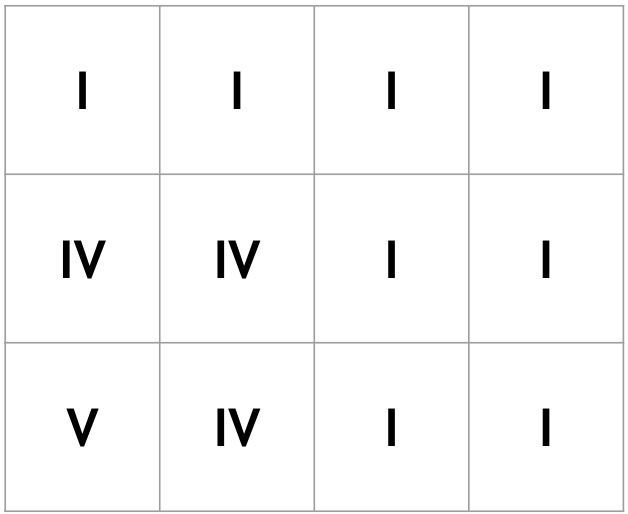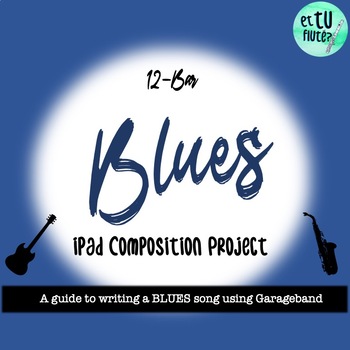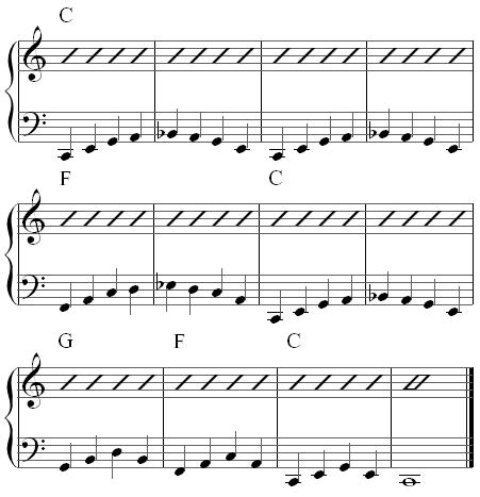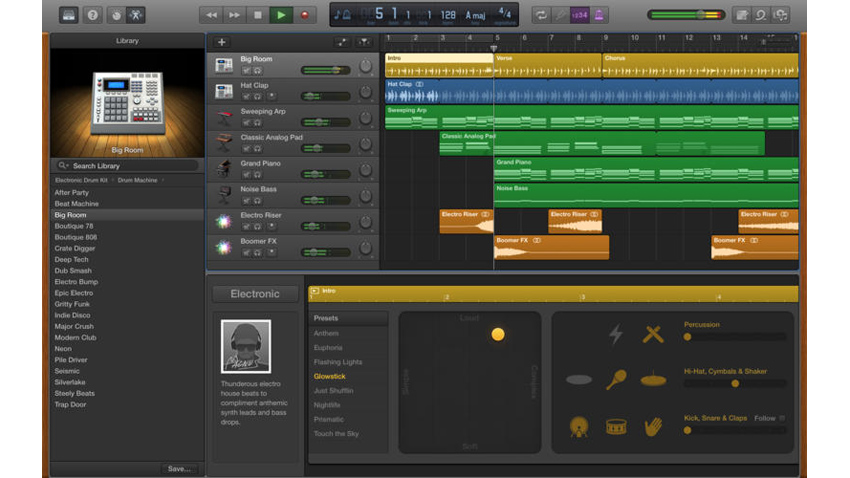Garageband 2.1 has a NEW live session drummer! It's quite amazing. The best way to learn a new feature is to jump right in and make a jam track with it. Today we learned the 12 bar blues progression us ing boomwhackers! If you have chromatic boomwhackers you can even let kids take turns soloing a blues melody. Remember that the melody should repeat two times and then, on the third repetition add something different or special.
My StudyBass
What is the Blues Form?

As I mentioned in about the blues, a song form is a structure, or a kind of formula, for a piece of music. The blues form is a specific song structure used in the blues as well as other styles inspired by the blues like rock, jazz, R&B, etc.

Garageband 12 Bar Blues Chords
Applying the I, IV, and V Chords

The blues uses the I, IV, and V chords throughout the song form. If you’re unfamiliar with the concept of the I, IV, and V chords, make sure you go through that lesson before continuing.
There are many variations of the blues. First I’m going to teach you the most common form that confuses students the least. Later in the lessons we’ll look at the many other variations.

The 12-Bar Blues Form
The most common form of the blues is a 12-bar pattern of chord changes. That is, a repeated twelve-bar chord progression. This is called “12-Bar Blues”.
Sing 12 bar blues over a piano, bass, drums and harmonica. GarageBand for iPad: 10+ Lesson Ideas 1. Transforming the Blues Aim To record a 12 bar blues backing in a unique musical style Skills covered. how to play the Smart Instruments and use the Autoplay function. how to multitrack record multiple parts. how to record an improvised blues solo using a limited scale. how to play in time to.
You should remember a bar is the same as a measure. Most often in blues you will count 4 beats to each bar – 4/4 time.
In a blues song this 12-bar cycle gets repeated over and over through the course of the tune. A blues song might play through it 20 times. It will depend on the specific song.
The blues can be played in any key. In whatever key you are in, 12-bar blues uses the same basic sequence of I, IV, and V chords. It is most easily thought of as three 4-bar sections – the first 4, the middle 4, and the last 4 bars.
The first 4 bars just use the I chord - I, I, I, I.
The middle 4 bars go IV, IV, I, I.
And the last 4 bars go V, IV, I, V. Then you repeat the whole thing again.
Garageband 12 Bar Blues Youtube
So, the basic 12-bar sequence looks like this:
Plugging In the Chords from a Key
To get the blues chord progression for the blues in A, we take the I, IV, and V chords from the key of A. That means A is I, D is IV, and E is V. Then, we plug those three chords into the corresponding places in the blues form. We end up with this set of chord changes:
For the blues in any other key, we’d do the exact same thing. Blues in C would plug in the chords C, F, and G into the 12-bar blues structure. Blues in E would use E, A, and B. And, so on. There are 12 major keys; you can play the blues in any one of them.
Garageband 12 Bar Blues Backing Track
Playing the Blues Form
The first step in learning to play the blues is getting comfortable with where the chords change. You need to memorize and completely internalize this sequence of chords. You can’t ever get lost wondering to yourself, “What chord is next?” With enough time and practice, you'll just hear and feel what the next chord change is. In the beginning you may have to really concentrate on the changes.
The Blues Form Exercises
In the blues form exercises we’ll outline each chord with its root note. You should be able to do this by yourself with a metronome and never miss a chord. You might record yourself to make sure you aren’t skipping any!
Garageband 12 Bar Blues

Garageband 12 Bar Blues Guitar
Once you have that down, we’ll apply more notes to the same set of chords. That’s when it’ll start to sound more like the blues and get more fun. Don’t fall asleep on me!